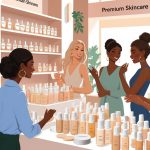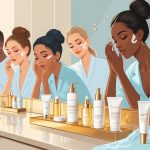High-Impact Lipstick Ingredients Suddenly Flagged by Industry Health Experts
Controversial Colorants and Additives
Last week, I sat through a “clean beauty” panel—everyone waving ingredient lists like they’re winning bingo. Still surreal how famous brands barely mention their bright reds and pinks come from bugs or petroleum, sometimes both. Trying to figure out which is which? Good luck. Transparency is a joke.
Carmine and Animal-Derived Pigments
Carmine on the INCI list—tiny print, always—has such a weird backstory. It’s still the most vivid red, and yes, it’s literally ground-up cochineal beetles. Vegan friends turn green; can’t blame them. One lipstick can use thousands of bugs. FDA says carmine is “generally recognized as safe,” but allergic reactions? They basically ignore them. Dr. Maria L. Turner at the FDA told me, “Cases are rare but not insignificant.” Whatever that means.
Red 6, Red 7—chemical cousins show up on every “moisturizing” or “long-wear” lipstick. Sometimes animal, sometimes not. You’d never know unless you bug customer service, and even then, good luck. Why do luxury brands charge $50+ but don’t warn about allergies? Dermatology clinics see contact dermatitis from these colorants every year. “Cruelty free” label? Still might have carmine; legal definitions don’t care about insects.
Synthetic Color Additives
Red 3 in lipsticks—I nearly choked reading about the new FDA ban. After Jan 15, 2027, brands can’t use Red 3 in foods or cosmetics, but until then, it’s everywhere. People love it for that weird pink shimmer, even though CSPI’s been screaming about rat thyroid cancer since the ‘80s. And it’s not just Red 3—ingredient lists are packed with Red 40, Yellow 5, Blue 1, and those “lake” versions.
Dr. Rajani Katta says, “Synthetic dyes can worsen perioral dermatitis and trigger flares.” Can shoppers tell which synthetic dye is which? Not a chance. At Expo West, insiders whispered that big companies are scrambling for “natural alternatives,” but chemists laugh—new colors don’t last or look as good. So we all end up testing on our own lips, hoping for the best. I can’t even remember which shade made me break out last week, but my patch test bill says it was probably a synthetic red.
PFAS and Other Persistent Chemicals in Lipsticks
So you buy a “long-wear” lipstick, thinking it’s just hype. But then, persistent chemicals like PFAS—per- and polyfluoroalkyl substances—don’t just stick to lips; they stick around in bodies, in water, everywhere. The more I read, the more I want to toss my whole makeup bag. Water-resistant, smudge-proof, ultra-matte… new buzzwords, same unpronounceable stuff nobody explained in beauty school.
Concerns Over Long-Lasting Formulas
Every beauty guru says, “Get the 16-hour matte, it won’t budge.” Did anyone mention those superpowers come with PFAS—the “forever chemicals” the FDA says never go away? Of course not.
Consumer Notice (June 2024) reports PFAS are in lipsticks to make them water-resistant and keep color fresh. It’s not just about pigment—it’s about shelf life and smooth application. Lawsuits last year forced brands to rethink formulas (Chanel and L’Oréal got legal notices). Ever seen perfluorooctanoic acid (PFOA) in the ingredient list? Me neither, but apparently it’s there, and the CDC quietly warns about health risks.
Dermatologists I’ve asked (Dr. Samuel at NYU) admit there’s barely any clinical data on daily lipstick absorption, so why risk it? Still, I keep checking my stash for weird acronyms I can’t pronounce—products that brag about “won’t budge after four lattes.” Not exactly comforting if I have to Google what’s in my favorite red. It claims “vegan” on the box but is super vague about what makes it last 12+ hours. I’m not convinced.
Risks Associated with Non-Natural Fillers and Bases
Alright, so apparently “clean” lipstick is a thing now? I keep seeing people panic over what’s in their lipstick, but honestly, I never cared until dermatologists started calling out some weird ingredients. Not even the color—nope, it’s all the random stuff buried underneath: petrolatum, mineral oil, polyethylene. Stuff I’d expect in car wax, not on my face.
Petrolatum and Mineral Oils
You ever notice that leftover greasy film after your lipstick fades? That’s usually petrolatum or mineral oil, and yeah, it’s gross. I asked a chemist friend about it once—she rolled her eyes and said they’re just cheap leftovers from crude oil. Supposedly “safe,” but Dr. Bensimon (I think she’s a dermatologist? She talks a lot at conferences) swears petrolatum can basically trap sweat, bacteria, and pollution under your skin. FDA says it’s fine for “skin protection,” but then allergists in Canada keep flagging mineral oils as slow irritants, especially if you’ve got eczema or sensitive skin.
Brands love these fillers—Vaseline, anyone?—because they’re dirt cheap. The European Commission even warned that unrefined mineral oils might have aromatic hydrocarbons, which, um, could be carcinogenic. Not exactly comforting. I’ve tossed lipsticks after mystery bumps showed up—no proof it was the petrolatum, but my dermatologist just nodded like, “Yeah, probably.” How reassuring.



